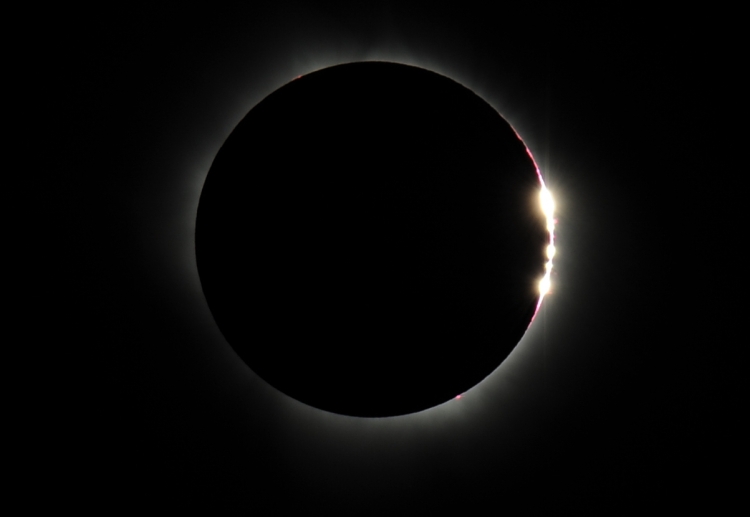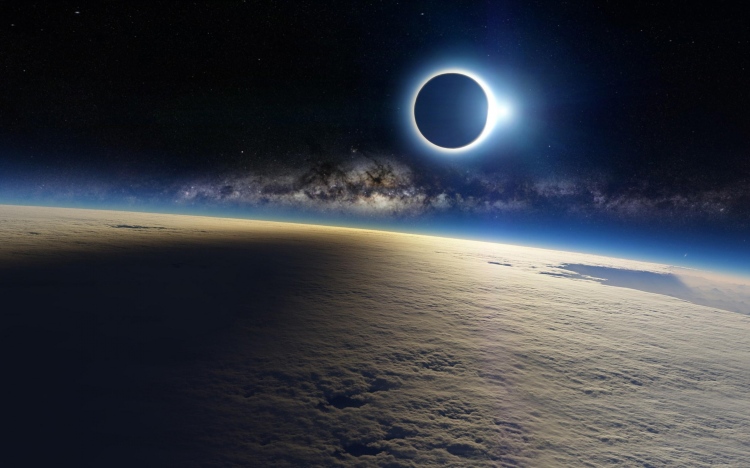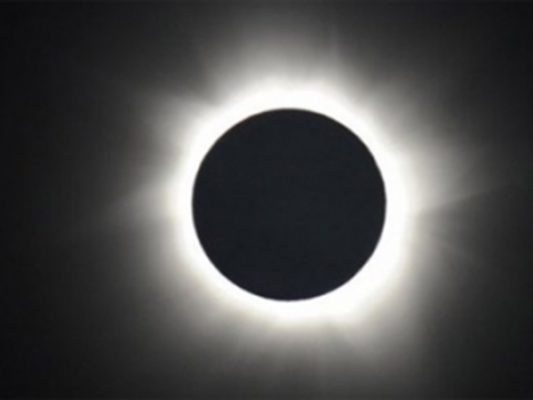Solar Eclipse much? I know I’m “late” to the party but 1st of all, we did not have a solar eclips in down under and 2nd nobody better to write about it than my blogger friend Emma.
Emma is one of my regular guest bloggers. I feel really thrilled about the possibility to post one educating post of this great blogger once a month over the next couple of months. Thank you so much, Emma, for sharing these great posts with us! If you would like to check out the previous guest posts, this amazing blogger wrote for me, head over here.

The total solar eclipse is an incredible phenomenon, one that I hope to see myself someday.
It isn’t often that an astronomical event occurs of such magnitude that people of all walks of life from all around the globe are drawn to one measly 65-mile wide strip of land, to crowd in like sardines as they watch the world change around them.
What’s important to realize about a total solar eclipse, versus just an annular one, is that it’s a people event.
This has happened so many times that there’s not much more scientists can glean from it. Of course, there might be that one stray blip of data that sneaks in during one eclipse and not another, but in general, this is something for crowds to enjoy.
And enjoy it they do. I have never known another event of astronomical significance to populate the web and turn heads like a total solar eclipse.

But with any event that draws crowds and instigates public excitement, there are drawbacks. What we tend to notice on the surface is people’s excitement and awe. What we don’t often realize are those of our less admiral qualities that get drawn out into the open—such as our more territorial urges.
Yes—people have been known to stake out their little corner of land and defend it with guns. Traffic goes crazy as we all vie for a prime spot. Camping is inadvisable.
I don’t mean to deter you. In fact, I encourage you to seek out the next solar eclipse, wherever you are, or chase a faraway one around the globe as the case may be. A total solar eclipse is one of the most incredible sights you will ever see, and I’m about to tell you all about it.
I’m only saying that it’s best to exercise caution when seeking out the path of totality. It’s only worth it if you stay safe. Plan ahead, be aware of your surroundings, and above all, don’t look at the sun without protection.
While we’re talking about looking at the sun, why don’t I show you a thing or two about what makes a total solar eclipse so special.

You may recognize this as the famed “diamond ring effect.” It occurs a few minutes before totality, and is one of the most beautiful sights you’ll ever see.
What you’re looking at is the dark side of the moon—its silhouette, if you will—crossing in front of the sun until only a little, teeny, tiny speck of sunlight peaks out from behind it. But the sun is so bright that even this tiny speck of light glares bright, like a flashlight hitting a mirror.
The diamond ring effect is as dangerous as it is beautiful. Do not look at it without proper solar equipment!
“Proper solar equipment” could mean the solar glasses that were in cheap supply up until August 21 this year, a welder’s mask if you know what you’re doing, a telescopic solar filter, or—if you’re ambitious—a solar telescope.
Please, please, please, if you have the opportunity to see the diamond ring effect, go! Don’t miss it! It’s incredible and spectacular. I’ll bet you can find poetry written on it. But please be safe!
Next up in a total solar eclipse is Bailey’s Beads…

Unfortunately, the best image I could find sort of faced in the opposite direction from the diamond ring effect above. So for your viewing pleasure, here’s a more sequential shot…

Here, from left to right, the diamond ring effect subsides as the moon covers more of the sun and blocks more of its light. The third and fourth images over are good shots of Bailey’s Beads. I’m not sure who Bailey is supposed to be, but this effect is named for its bead-like appearance.
Once you see Bailey’s beads, you should count thirty seconds—and make sure it’s thirty seconds! —and then look at the sun without protection.
Yes, you read that right. I said look at the sun without protection.
But count thirty seconds first. Please. For your own sake, if you don’t want to risk retinal damage, which in plain English means loss of sight or even blindness, count thirty seconds first. I cannot stress this enough.
Then you can look at the sun without protection. This is the part where I urge you to do so. This entire time, it was physically dangerous to your person to look without protection. Now, if you don’t take off those solar glasses, you’ll miss the show.
And by the show…yes, I mean totality.
Totality…what exactly is totality, anyway?
Well, the simple explanation would be the moment when the moon blocks out enough of the sun’s light to make it safe to look at without protection, but that’s boring. Let’s take a look at how the world is changing around us.
 Okay, see that big black spot on the Earth?
Okay, see that big black spot on the Earth?
That’s the moon’s shadow.
Yup. That’s a big giant shadow of the moon on Earth, photographed by NASA from high above.
It reminds me of the shadows of clouds on the ground…except much bigger.
Much, much bigger.
From high up above the clouds in this image, we can see the elongated shadow of the moon as it slips over the Earth’s surface…
But the coolest part is, you don’t even need to work in NASA or on an aircraft to see this stuff. I wasn’t able to find a picture, but when you’re standing on the ground waiting for totality, here’s what you can see.
First, please make sure you’re not looking at the sun.
Second, take off your protection, because otherwise you won’t be able to see anything but the sun.
Third, look around you. Find the direction the moon is coming from. It might help to remember which direction the moon is creeping across the sun overhead. In the distance, you’ll see the great darkness of the moon’s shadow rushing toward you.
Yeah. I’m serious.
When totality hits, it’s the most incredible thing in the world. It’s night during the day. Birds stop singing. Winds change. The temperature drops dramatically. To say nothing of the energy grid.
During the eclipse of August 21, 2017 in the United States, 75% of the nation’s solar power energy grid was knocked out. 25% had to support the nation for the duration of totality.
But the real show, the show you CANNOT see with your solar glasses on, is up above you.
This is the only time you will ever be able to see the sun’s corona.
The corona is a layer of the sun. The sun is made up of several layers, just as the Earth has a inner and outer core, a mantle, and a crust. The sun is made up of its core, its radiative and convective zones, its photosphere and chromosphere, and its corona.

The photosphere is the layer of the sun that produces its light, heat, and energy. The prefix photo- means light, so that’s where the name comes from. This is the layer of the sun that you see during the day. It outshines the layers outside of it.
The corona may be the most surface layer of the sun, but it’s the dimmest. Its almost angelic glow is completely swallowed up by the photosphere. But during a total solar eclipse, you can see it.

This is a good example of what you might see. I’ve heard that the corona appears almost unearthly. The sun as we know it is harsh and bright and its light scatters throughout our atmosphere, touching every surface. But the corona is gentle and glowing. And it’s what makes totality such an incredible phenomenon.
Totality lasts a few minutes on average. After that, you’ll need to whip those glasses back on, because you’re about to get an encore of everything that’s just happened—but in reverse.
Bailey’s Beads will peak out around the edge of the sun, just on the opposite side of the disc. Then they’ll give way to the brilliant diamond ring effect, and eventually the moon will creep away across the sun’s disk until it disappears entirely.
I could go on for ages about the solar eclipse and what makes it such a spectacular event, right down to why there’s such public uproar over an event that is actually not that rare, but I think I’ll leave off here.
If you want to read more on totality or just eclipses in general, never fear—I’ll have some posts on that up on my own blog soon enough.

I’m going to have to visit another country to see another total eclipse – ever. Small price to pay!
LikeLiked by 1 person
Indeed. There will be one in America in 7 years, though I don’t know when the soonest one worldwide will be. If you’re interested in some more in-depth explanation of the solar eclipse, I’ll be publishing a couple posts on it towards the end of the week 🙂
LikeLiked by 1 person
I’m a bit of an aiming m astronomy gem but I’ll make sure I look them up ☺️
LikeLiked by 1 person
Well, you’re following my blog, right? You’ll see them pop up Friday and Saturday, possibly Sunday. (Not sure how many I’ll write.) I’m aiming to post every day this month; so far I’ve got this week covered.
LikeLike
Yeah, though I’m not reading blog posts as often as I would like. But I’ll keep a look out ☺️
LikeLiked by 1 person
I gotcha. Sounds good 🙂 Don’t worry, even if you miss them this week and come back later, they’ll still pop up on my home page/archives. I’ve tried to make it easy to navigate SaYD and find old posts.
LikeLike
I’m with ya, I do the same ☺️
LikeLiked by 1 person
Love that kind of blog 😊
LikeLike
Very informative 😊
LikeLiked by 1 person
Good to hear! 😊
LikeLiked by 1 person
This is a very nice and enthusiastic write-up. One quibble, is that there is still a lot of solar corona science to be gained during a total eclipse, but the details are a bit esoteric and I’d have to review the literature to even support my statement.
LikeLiked by 1 person
Why hello! Thanks for pointing that out 😊
LikeLike